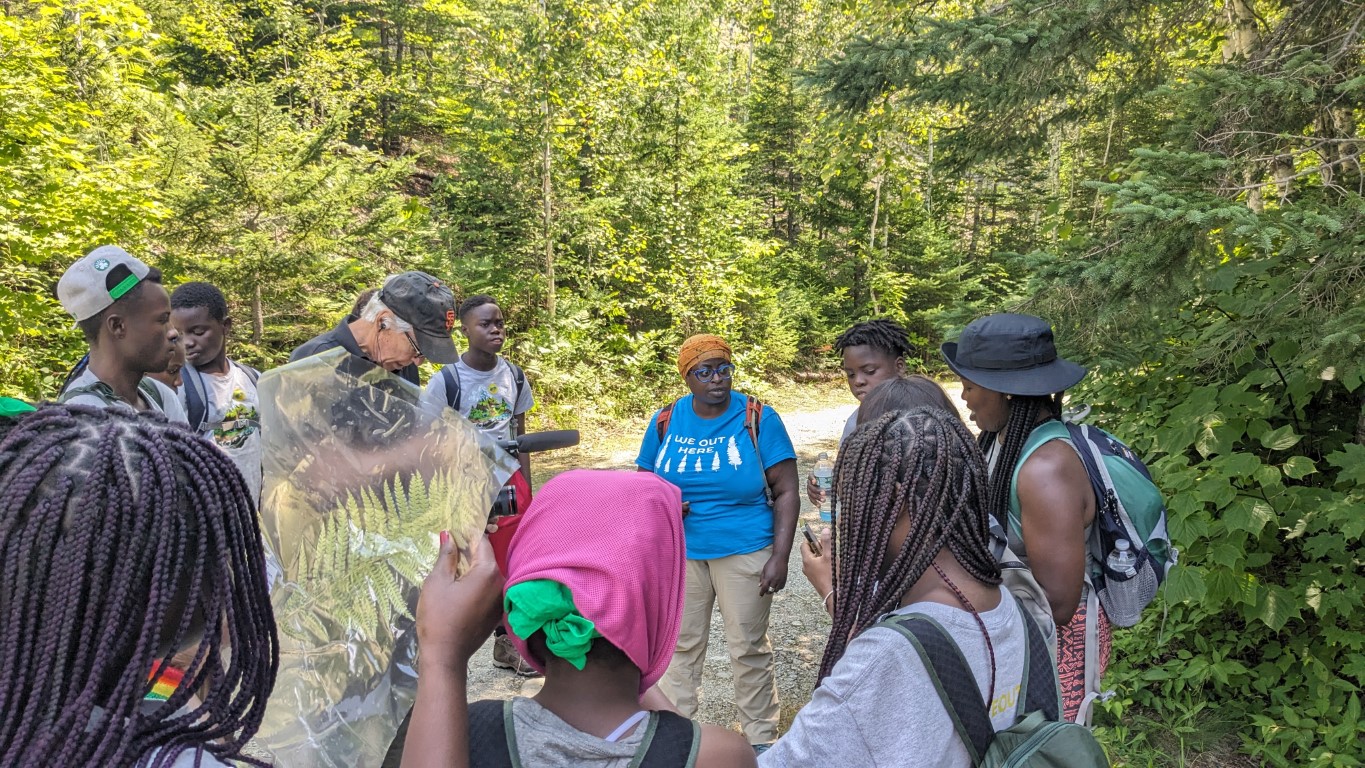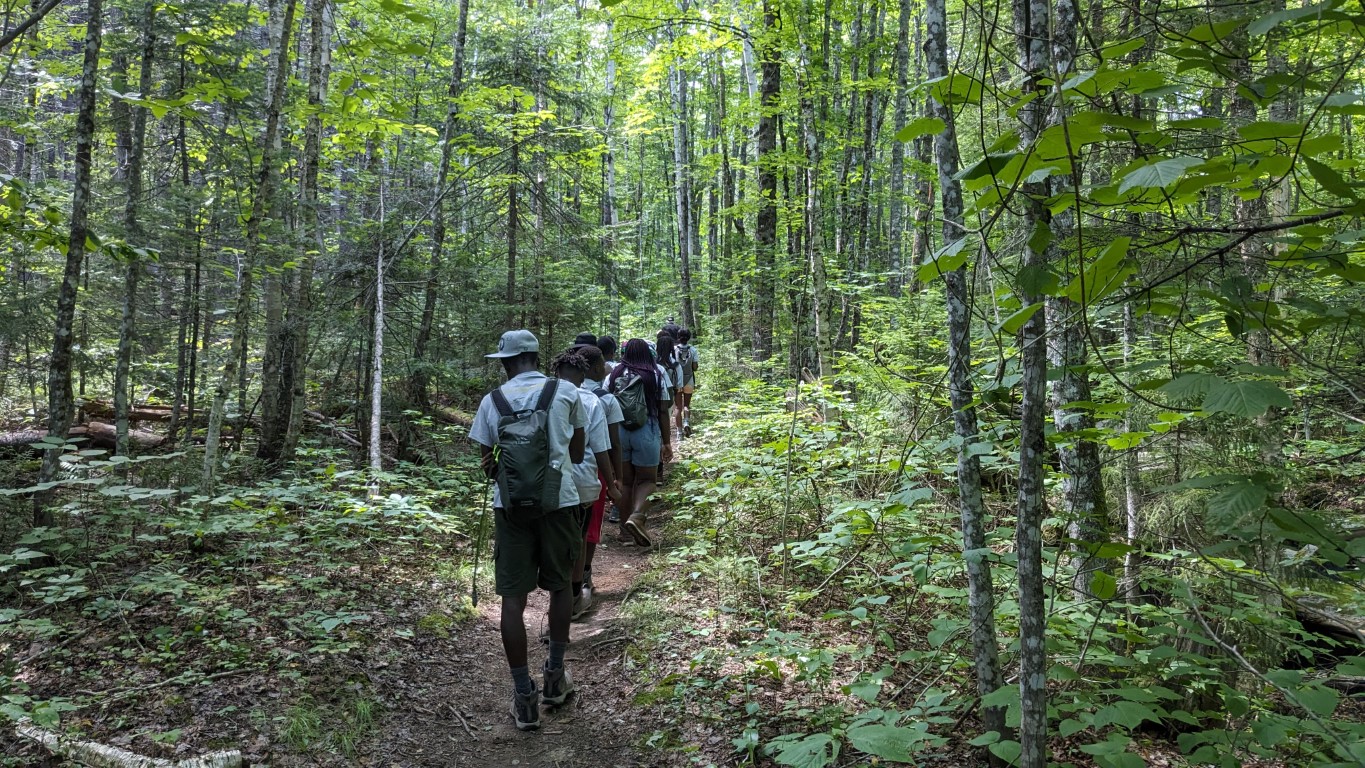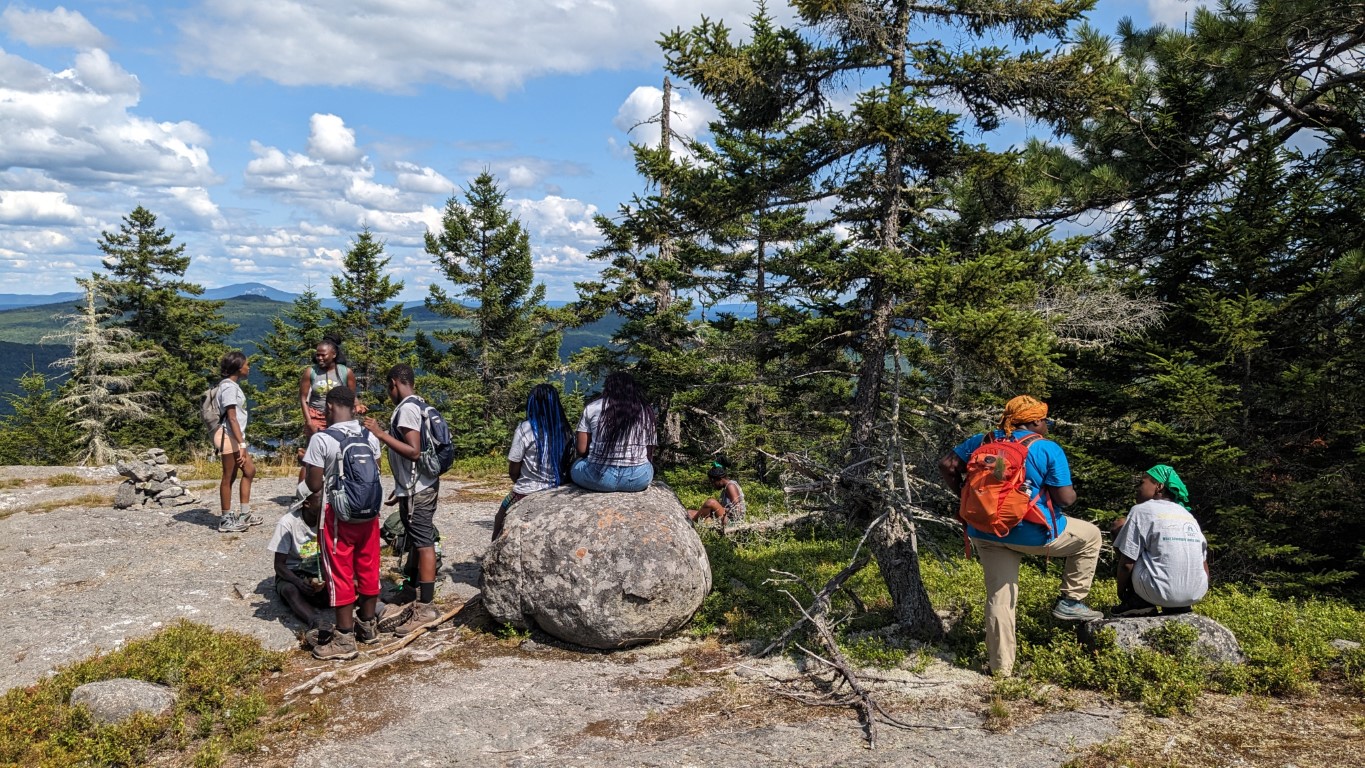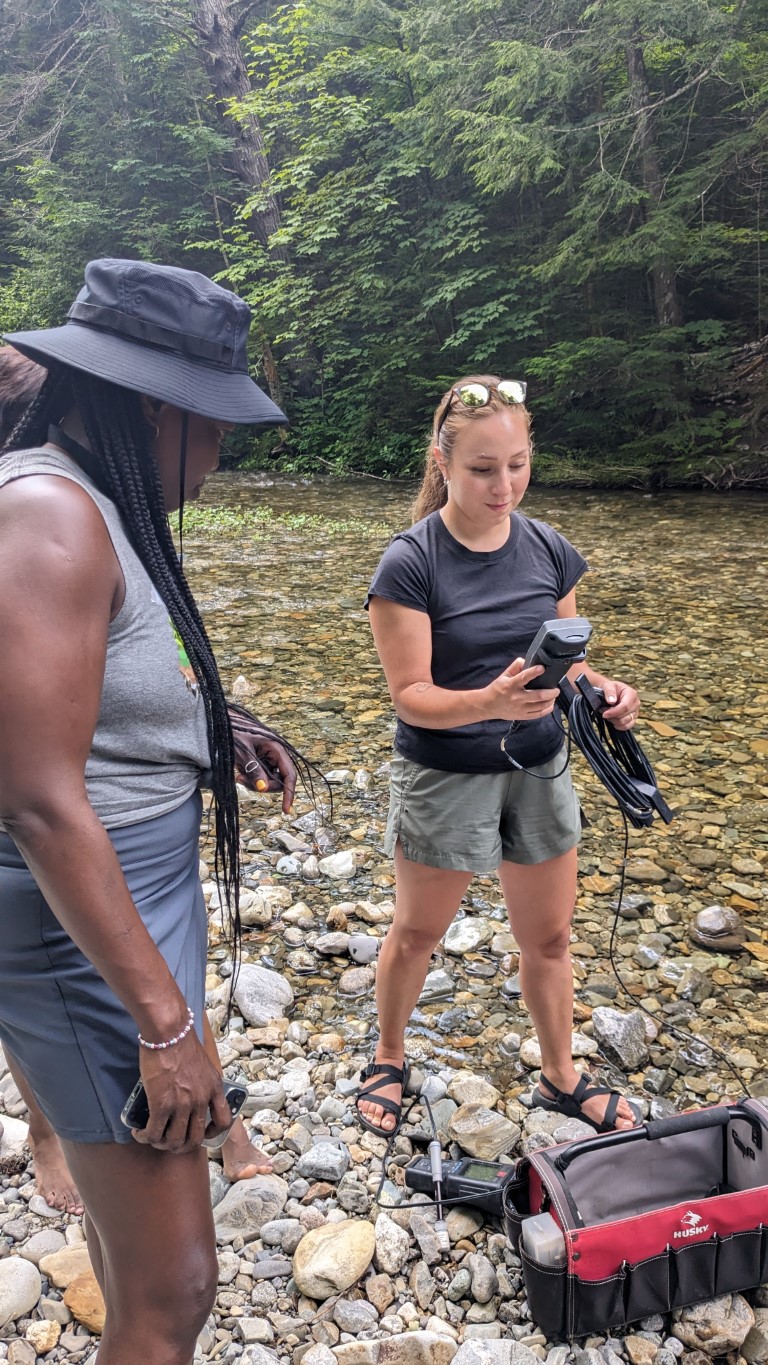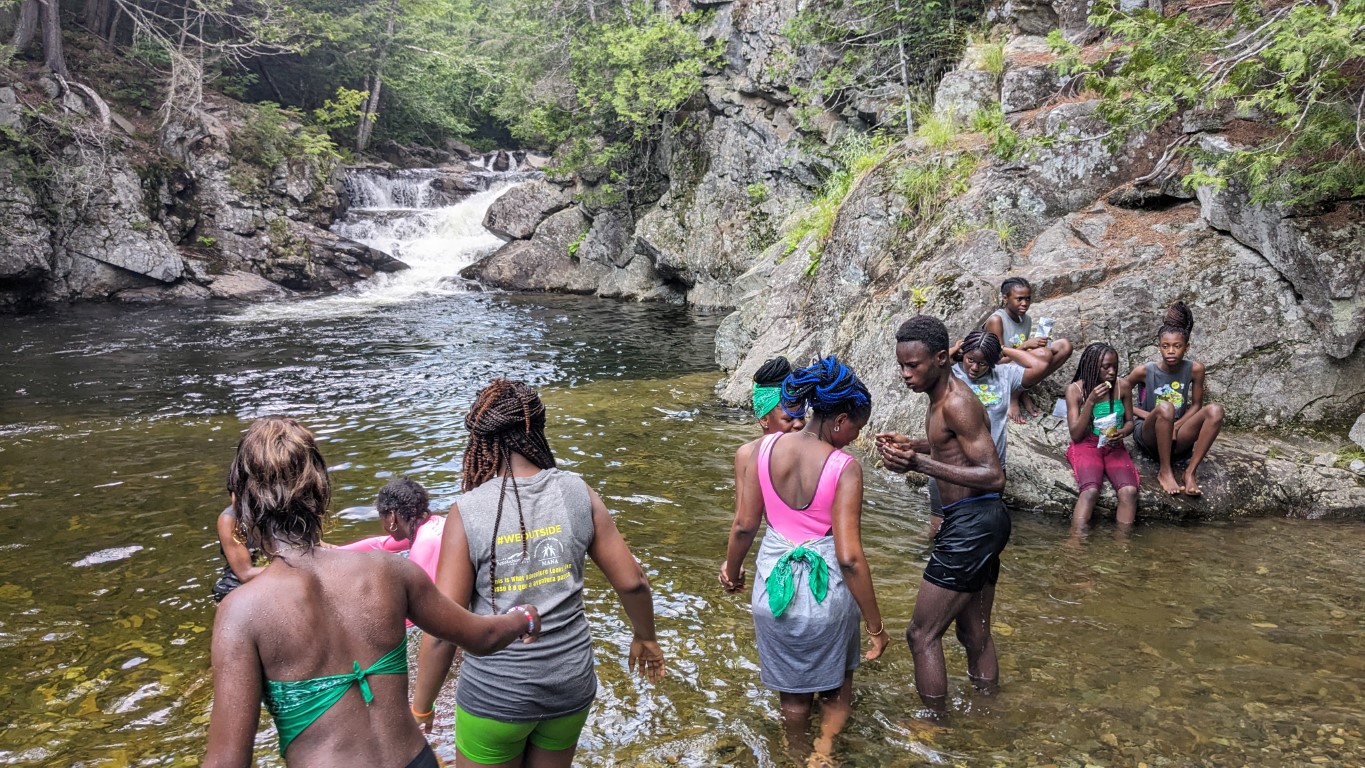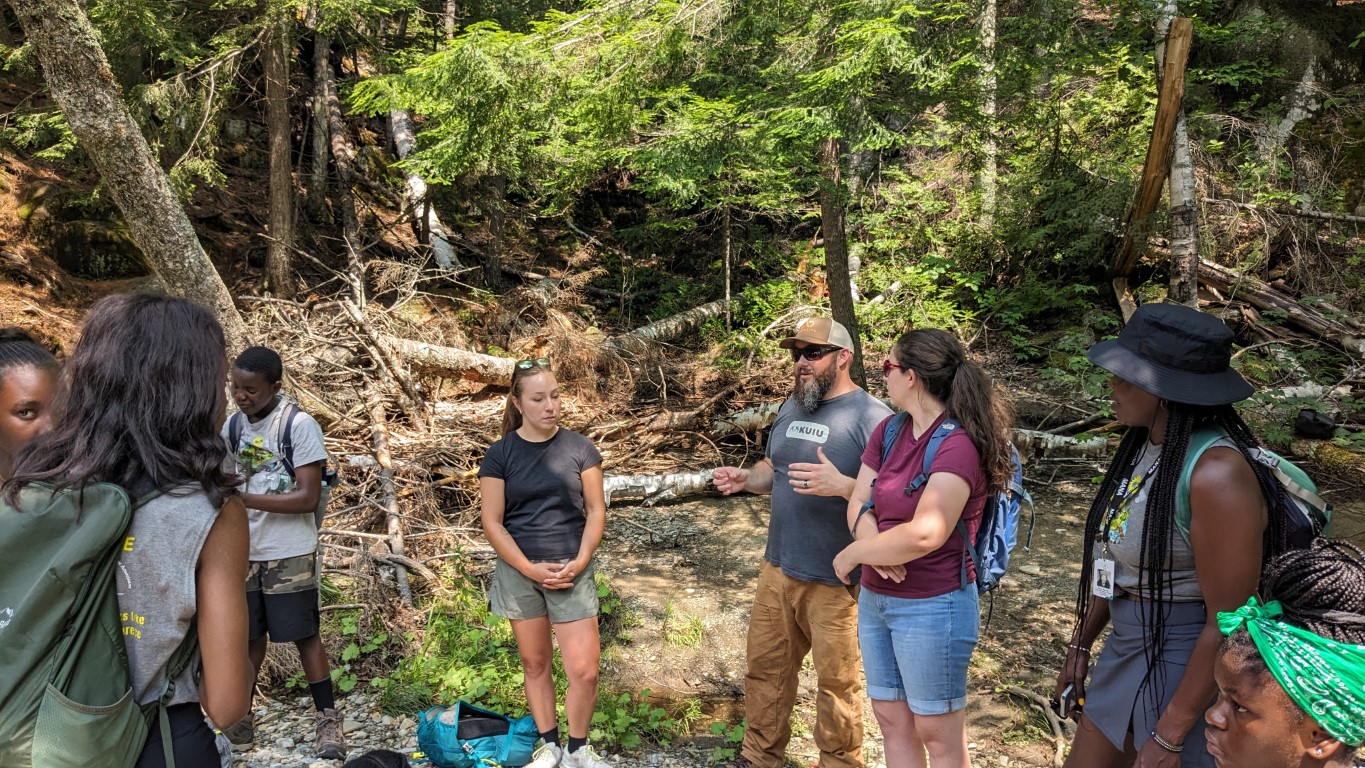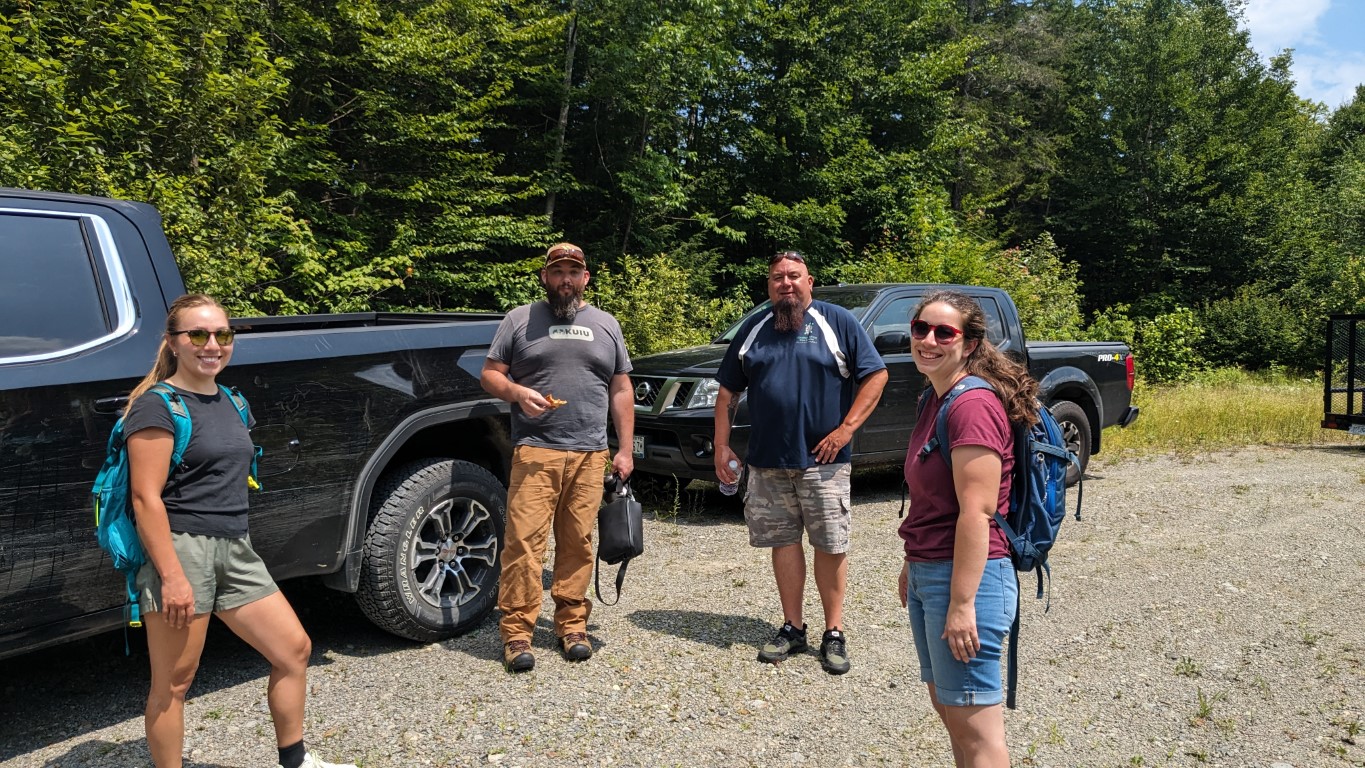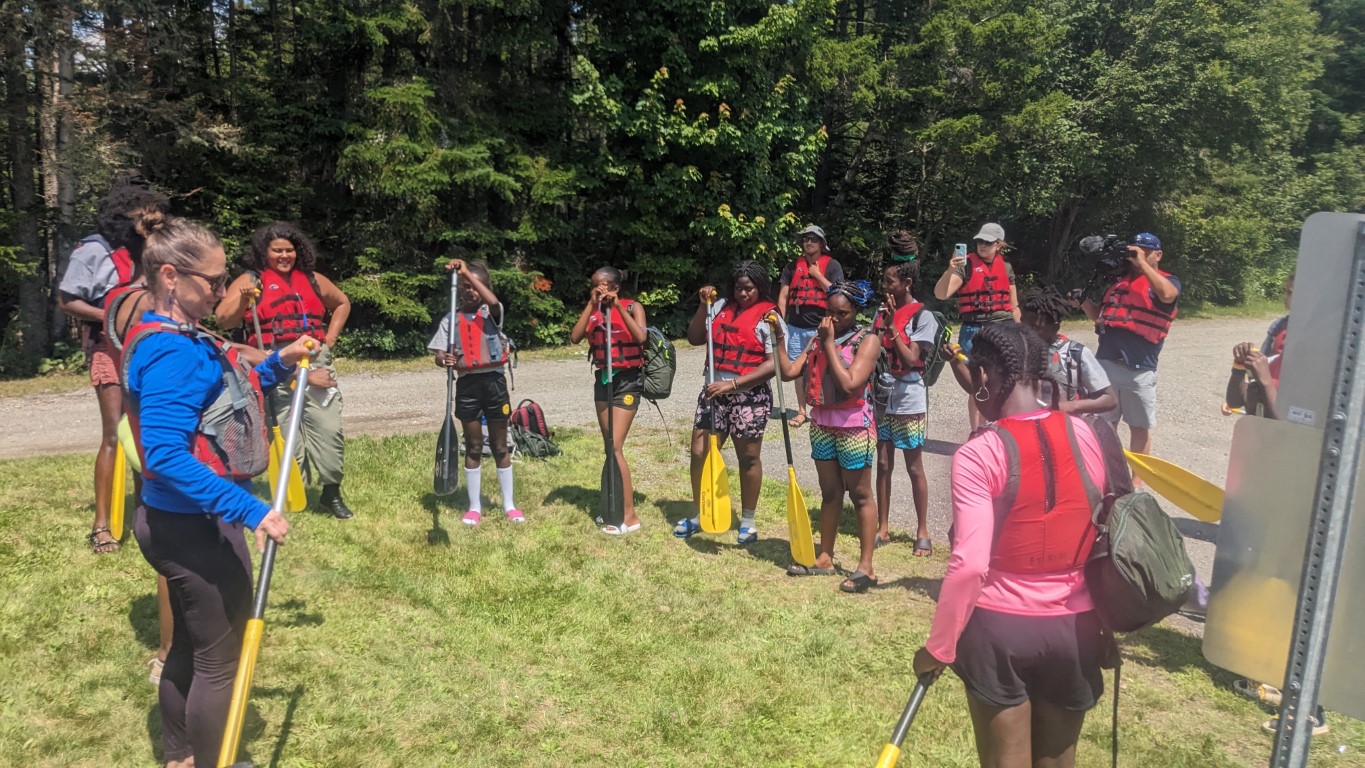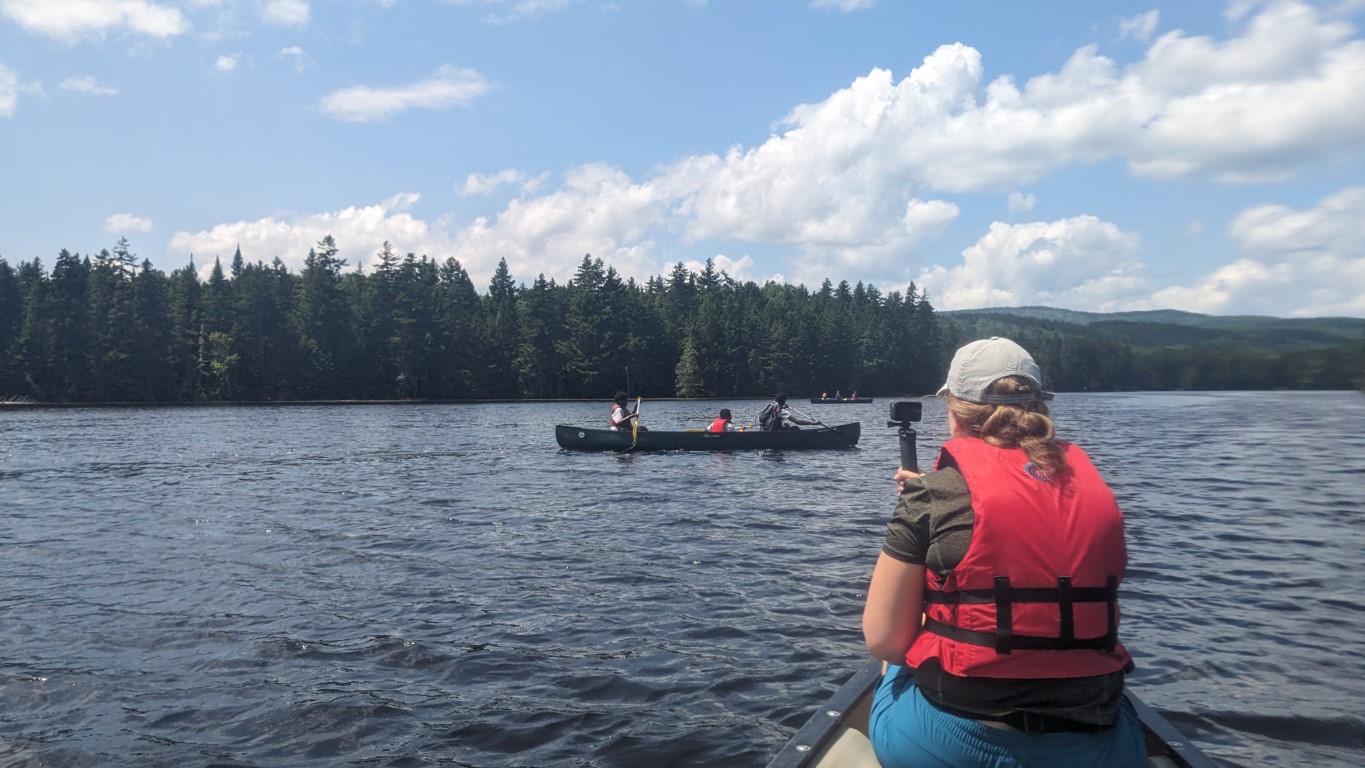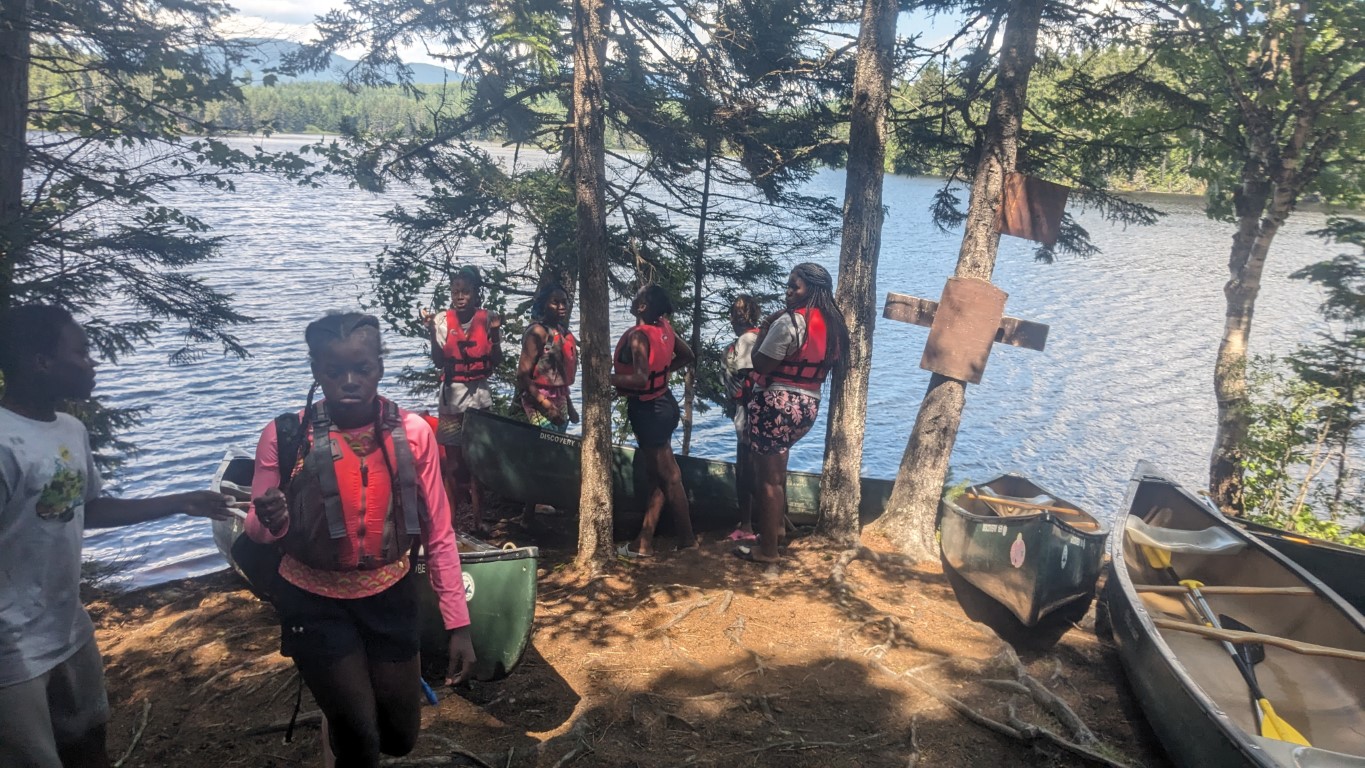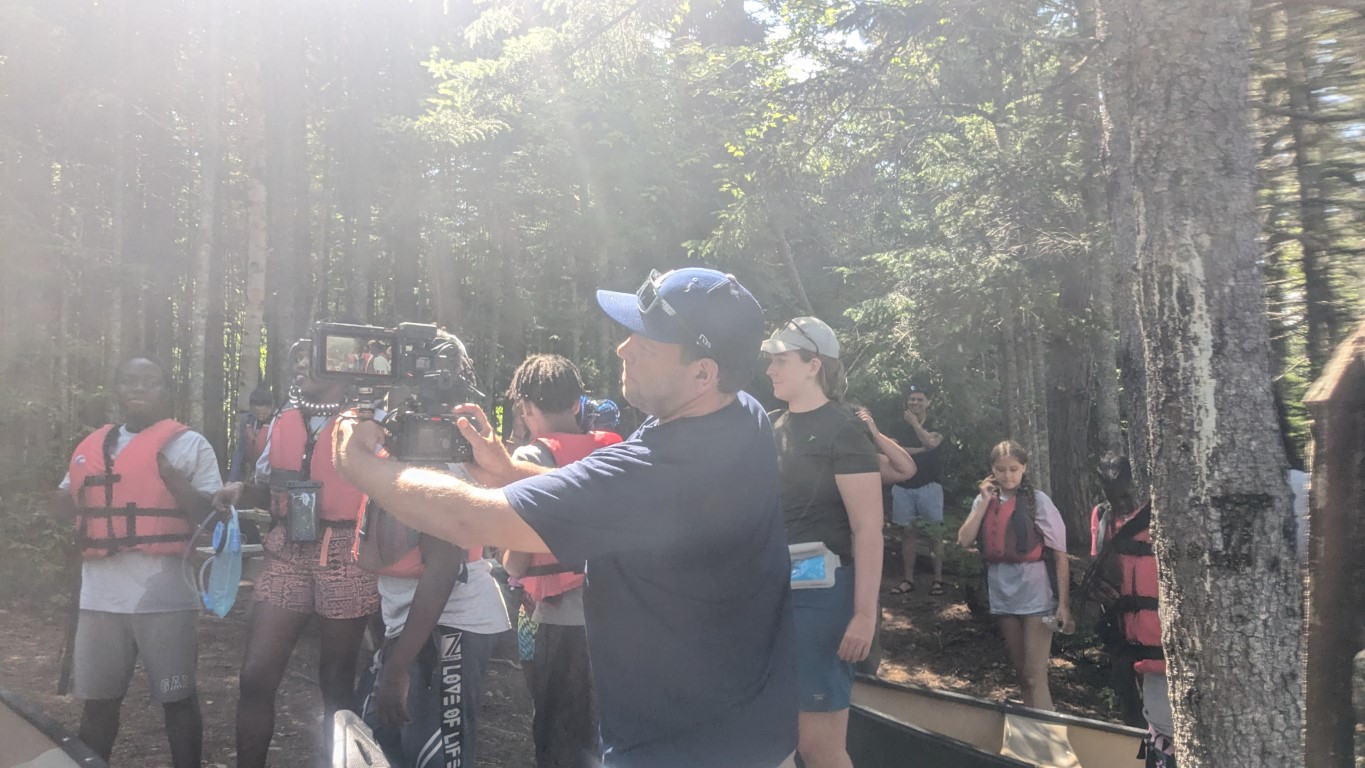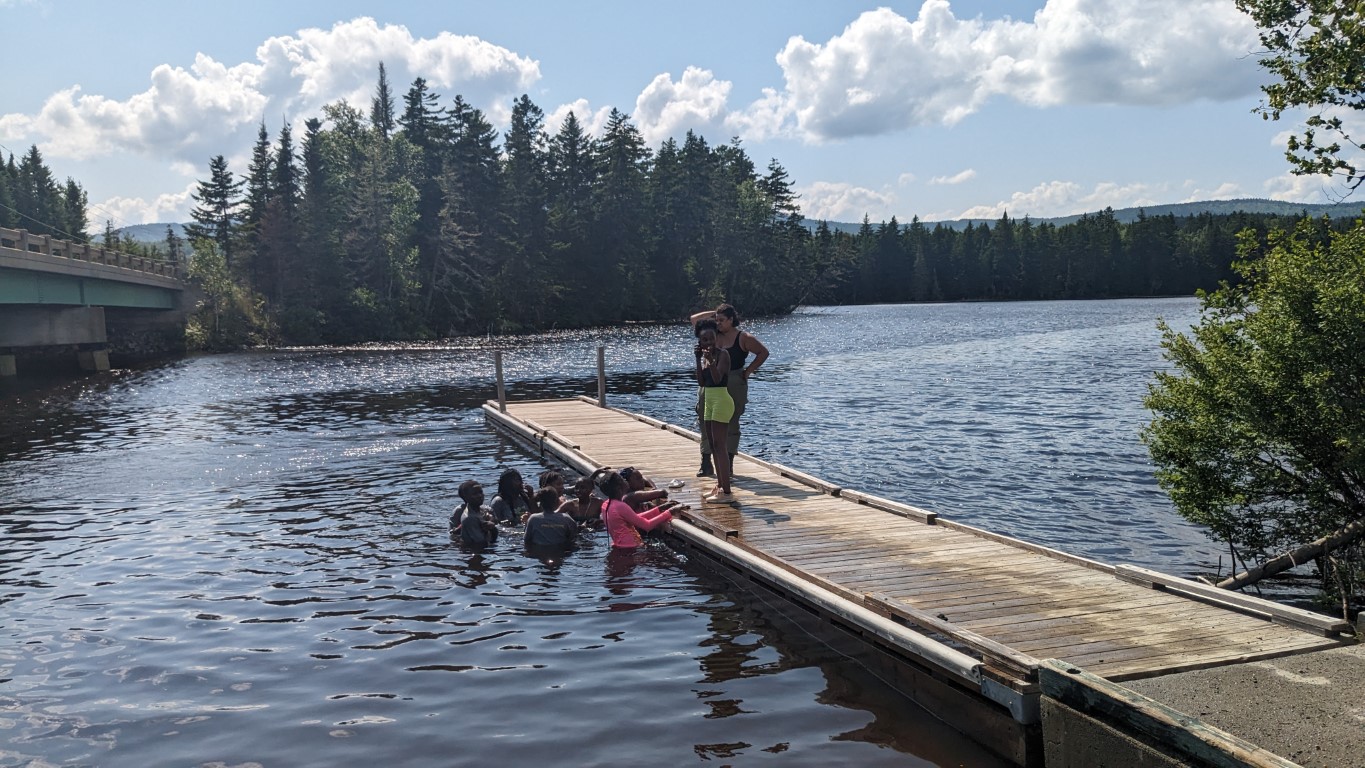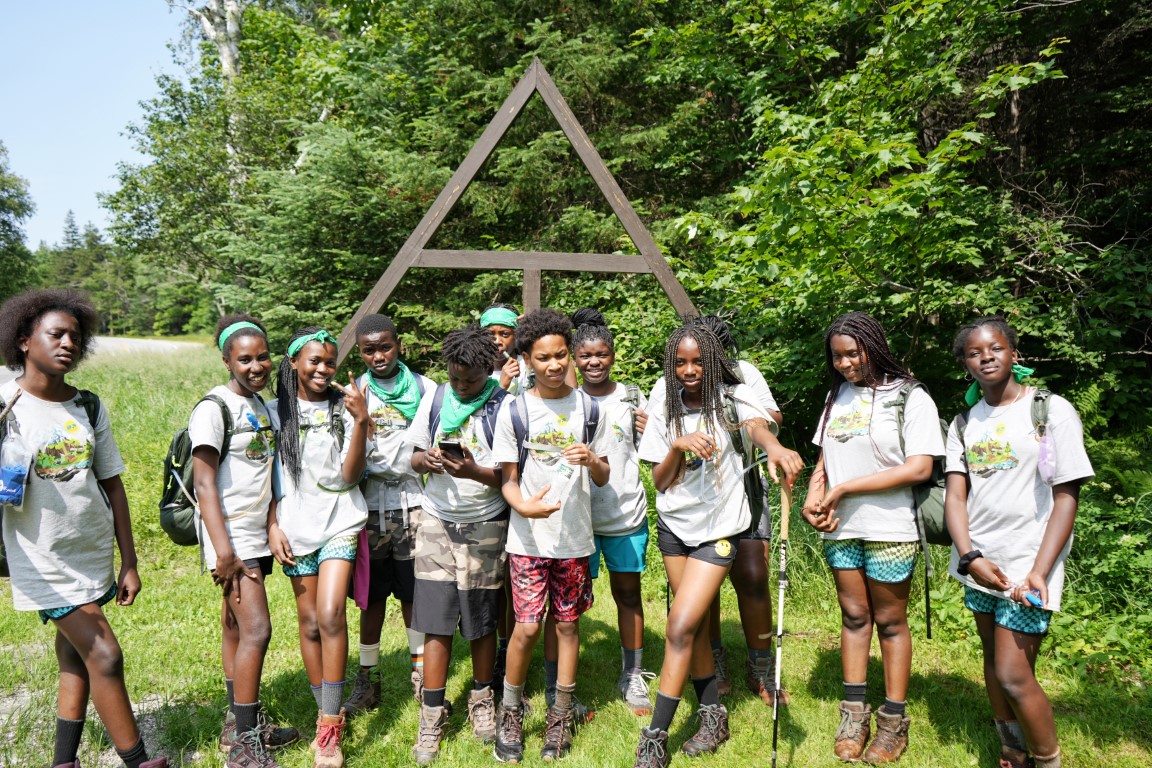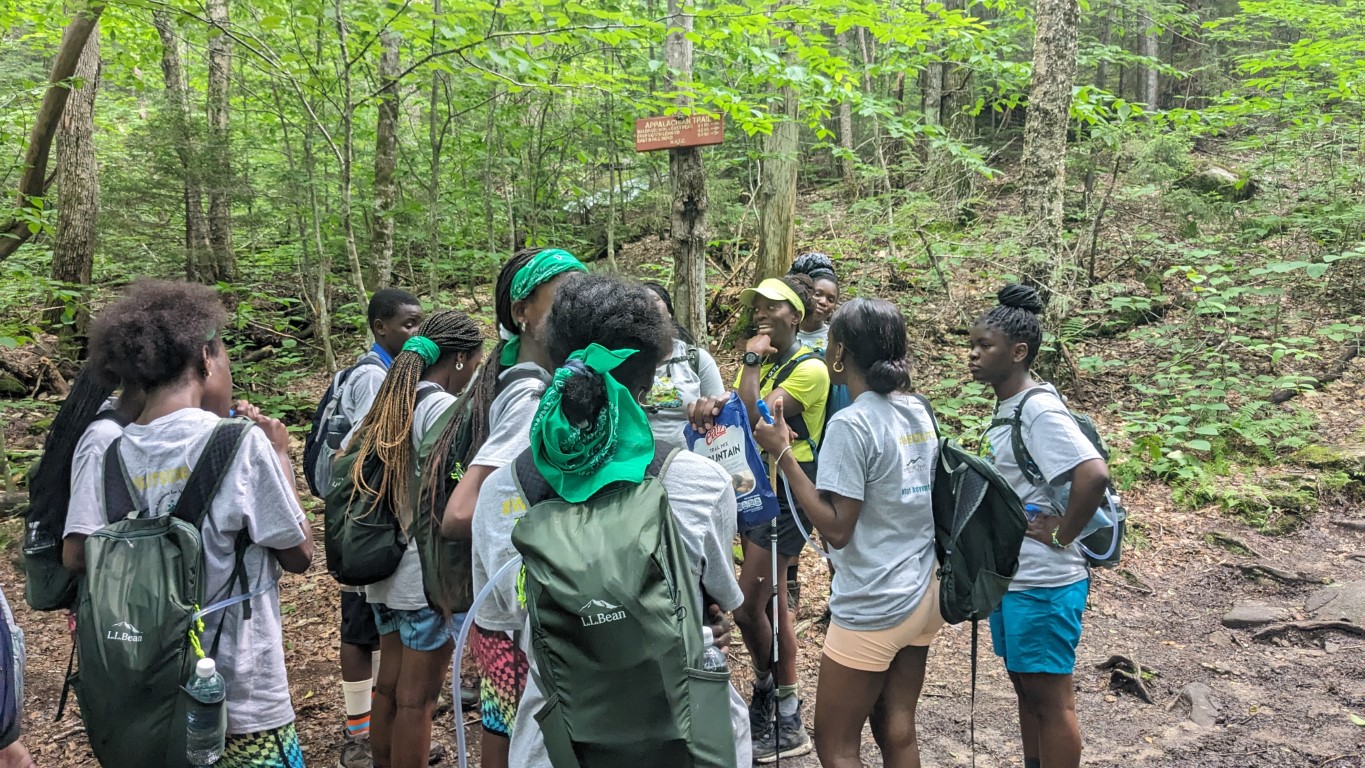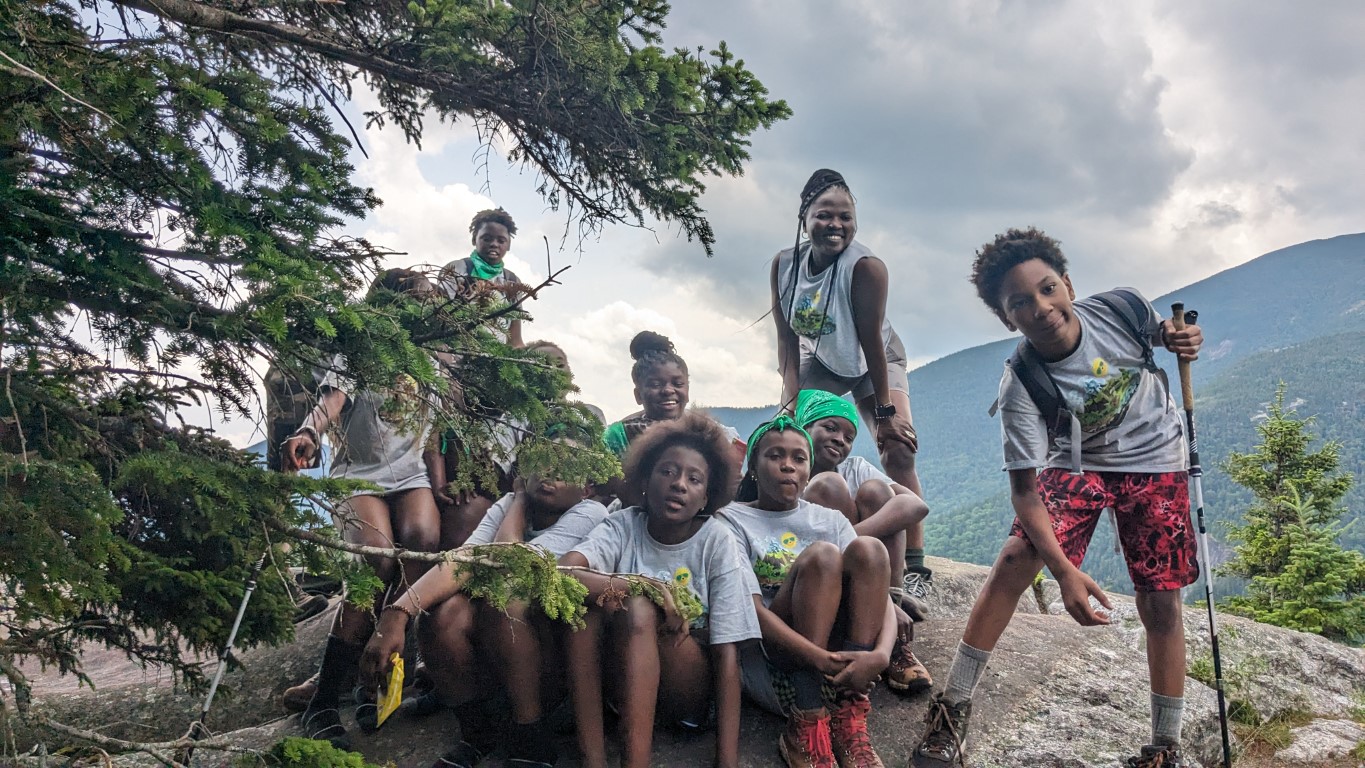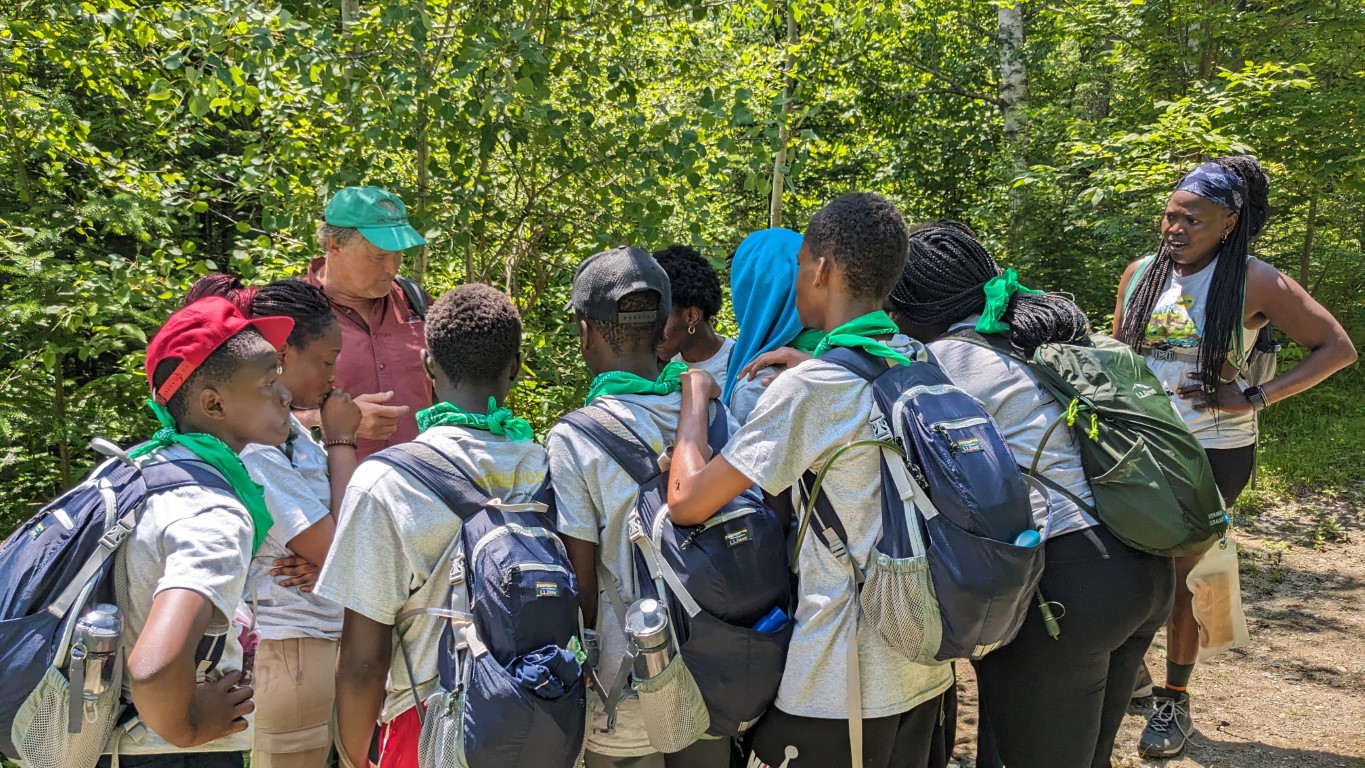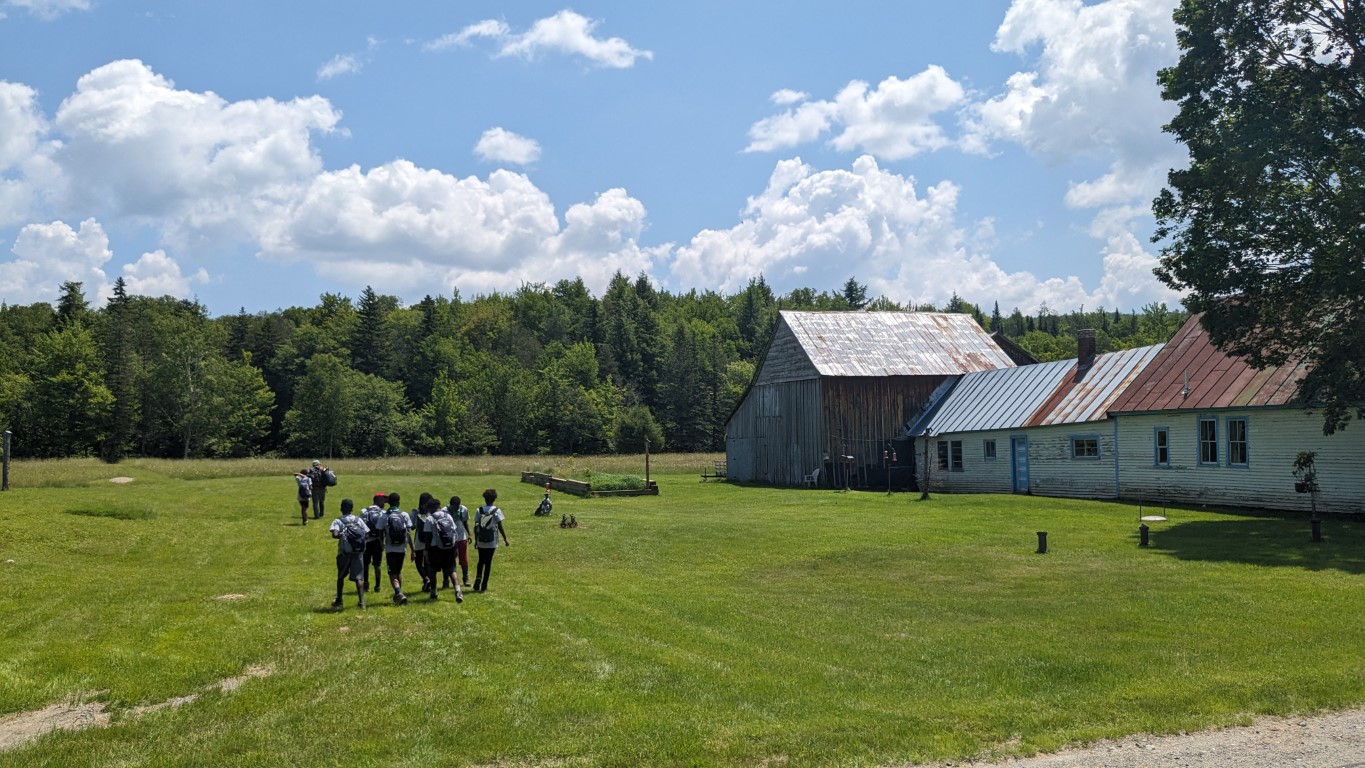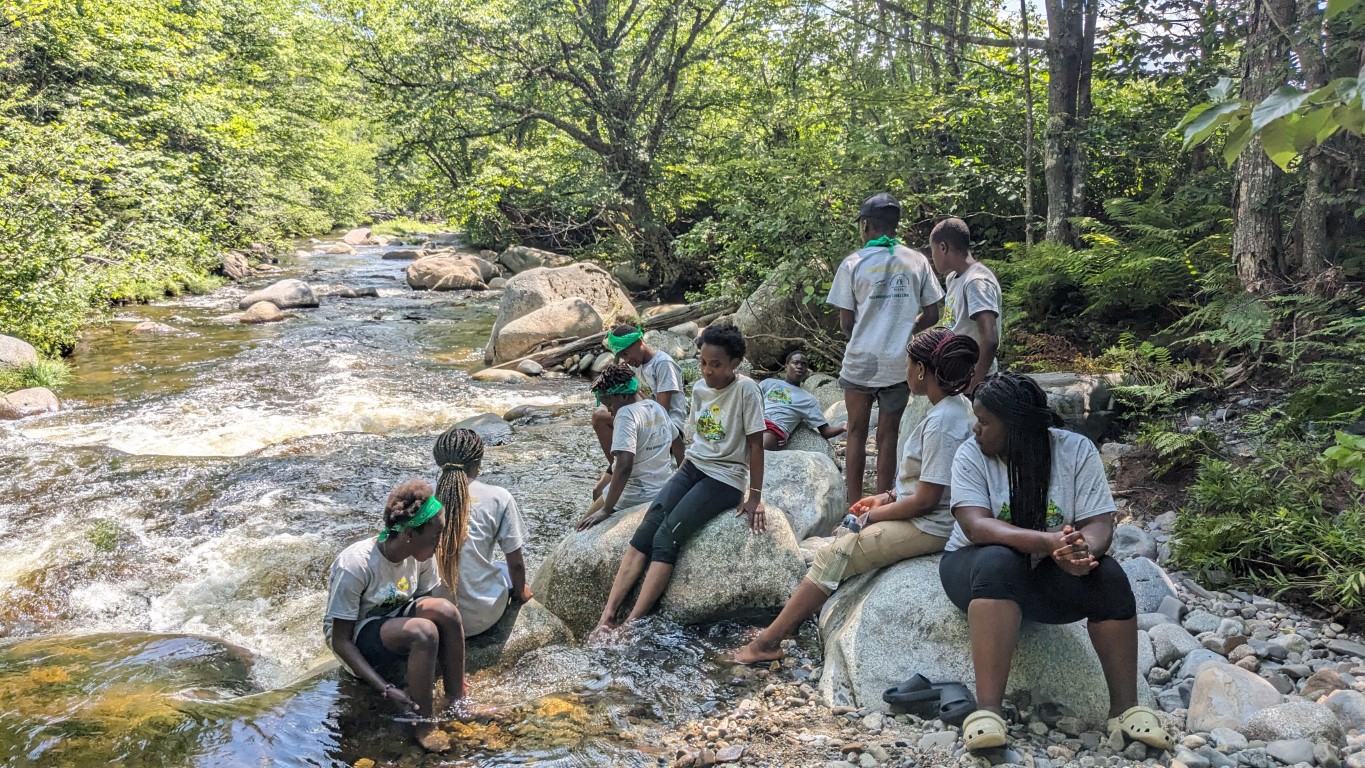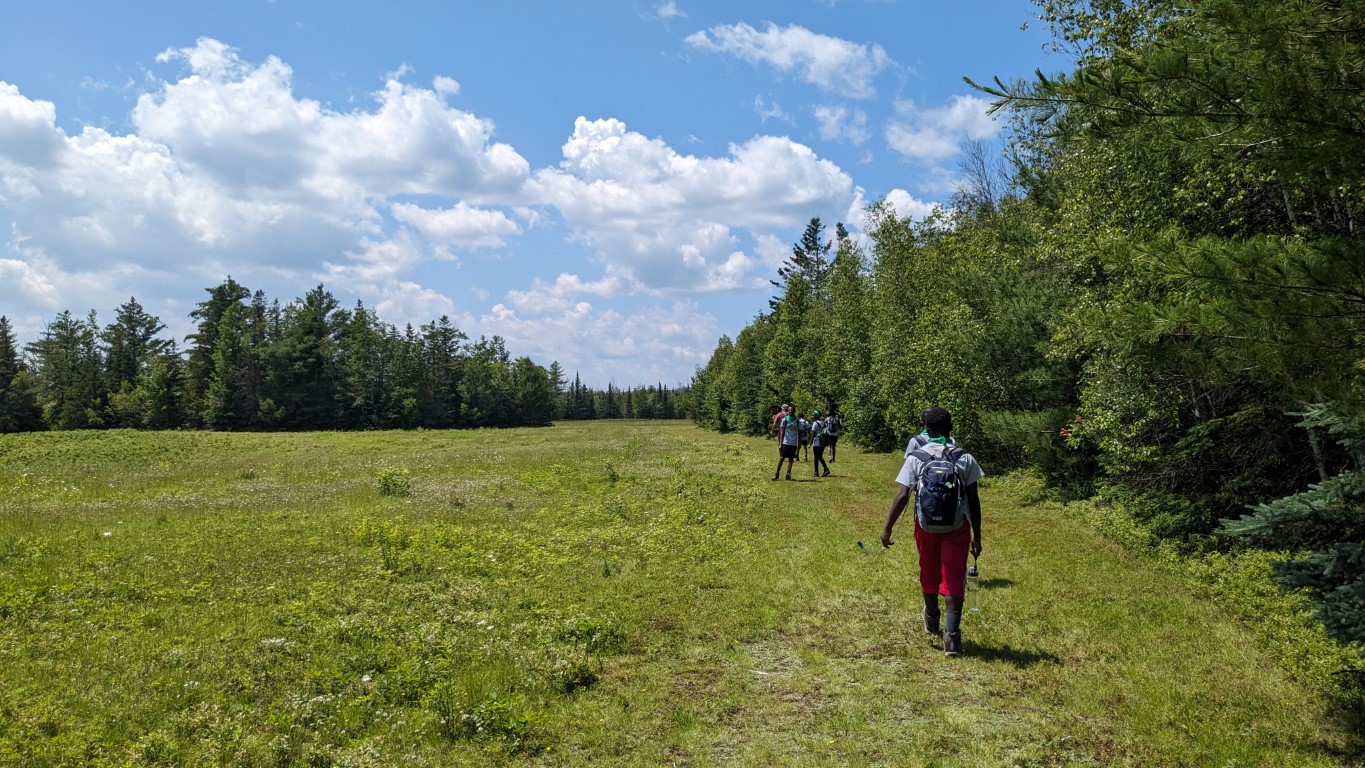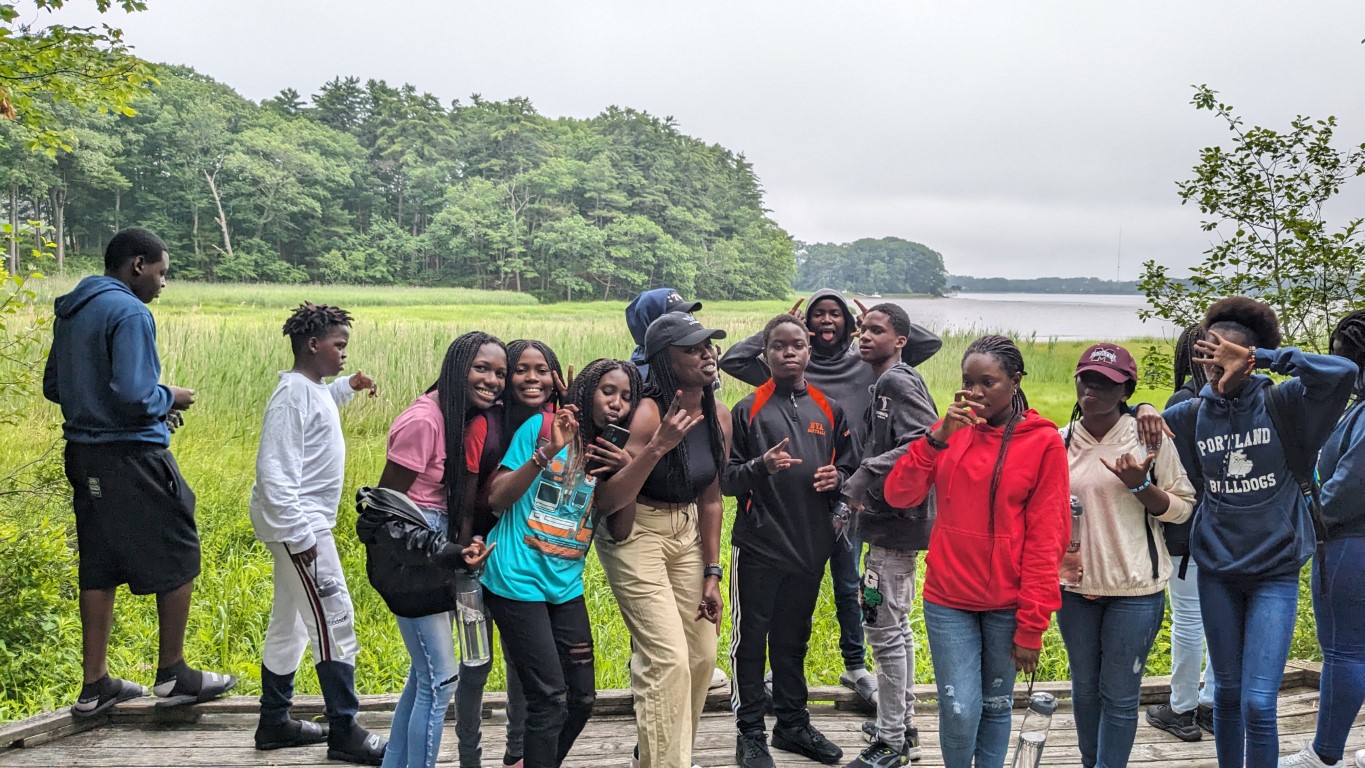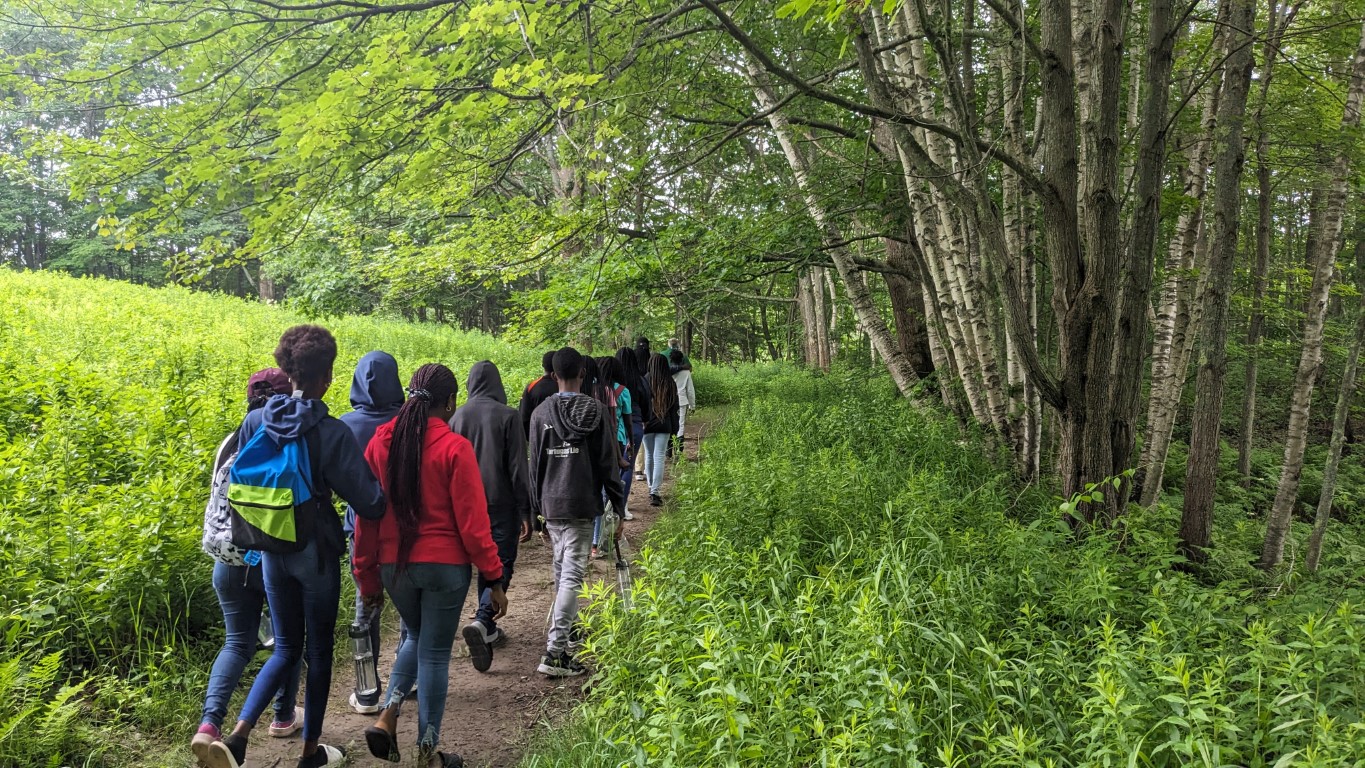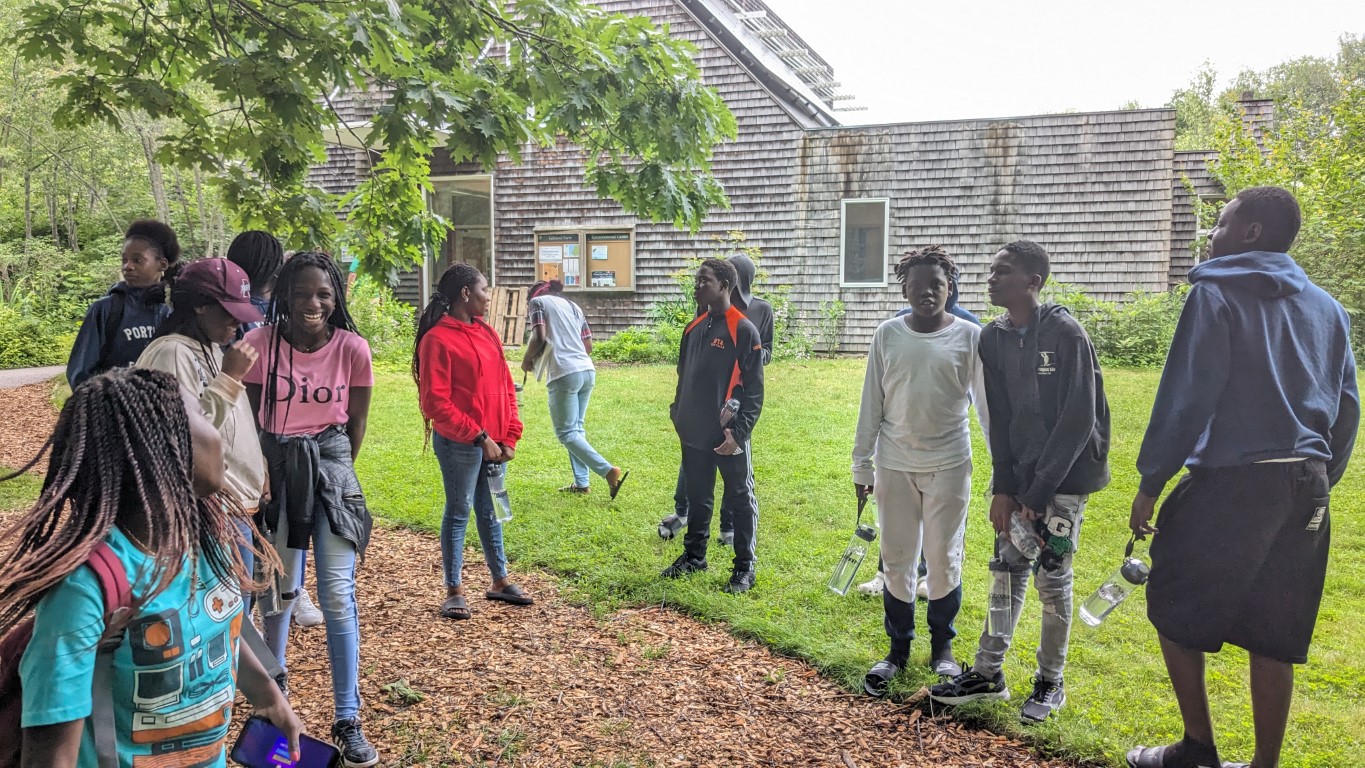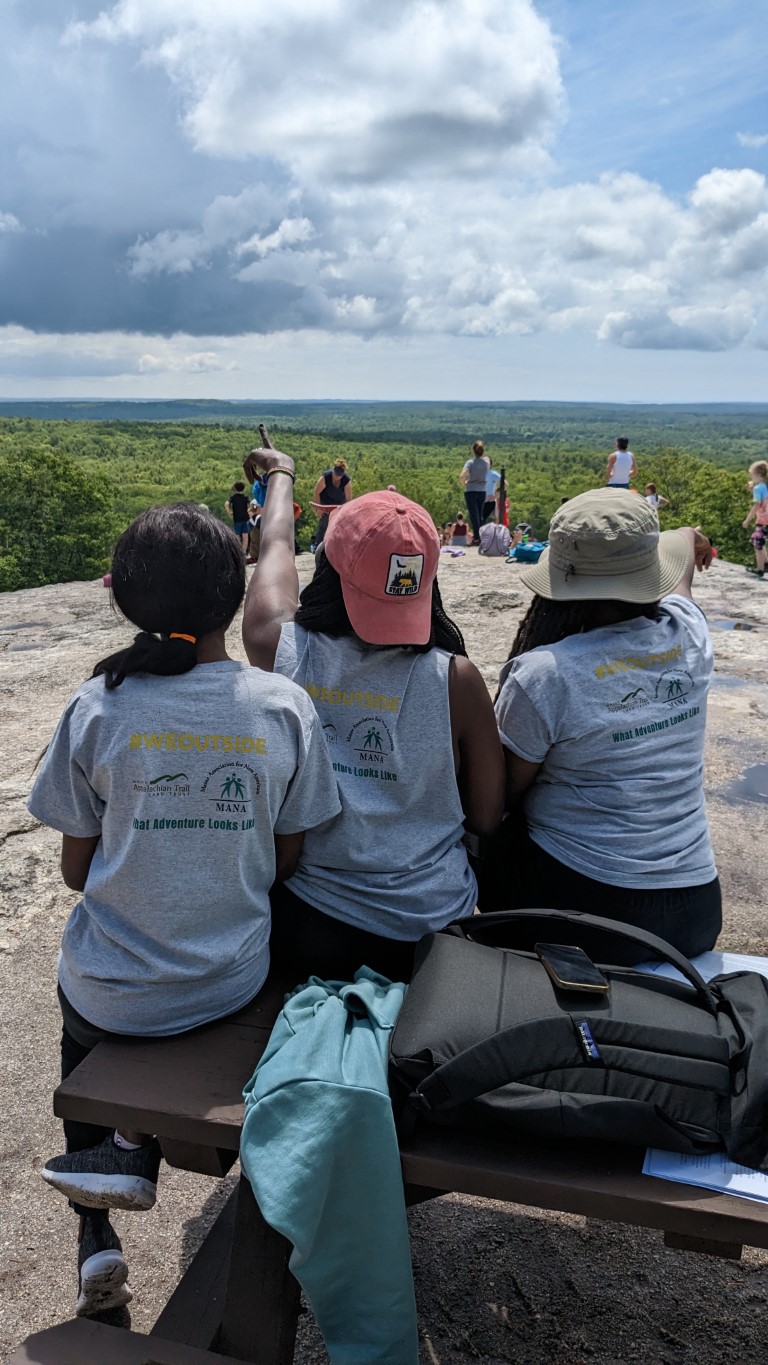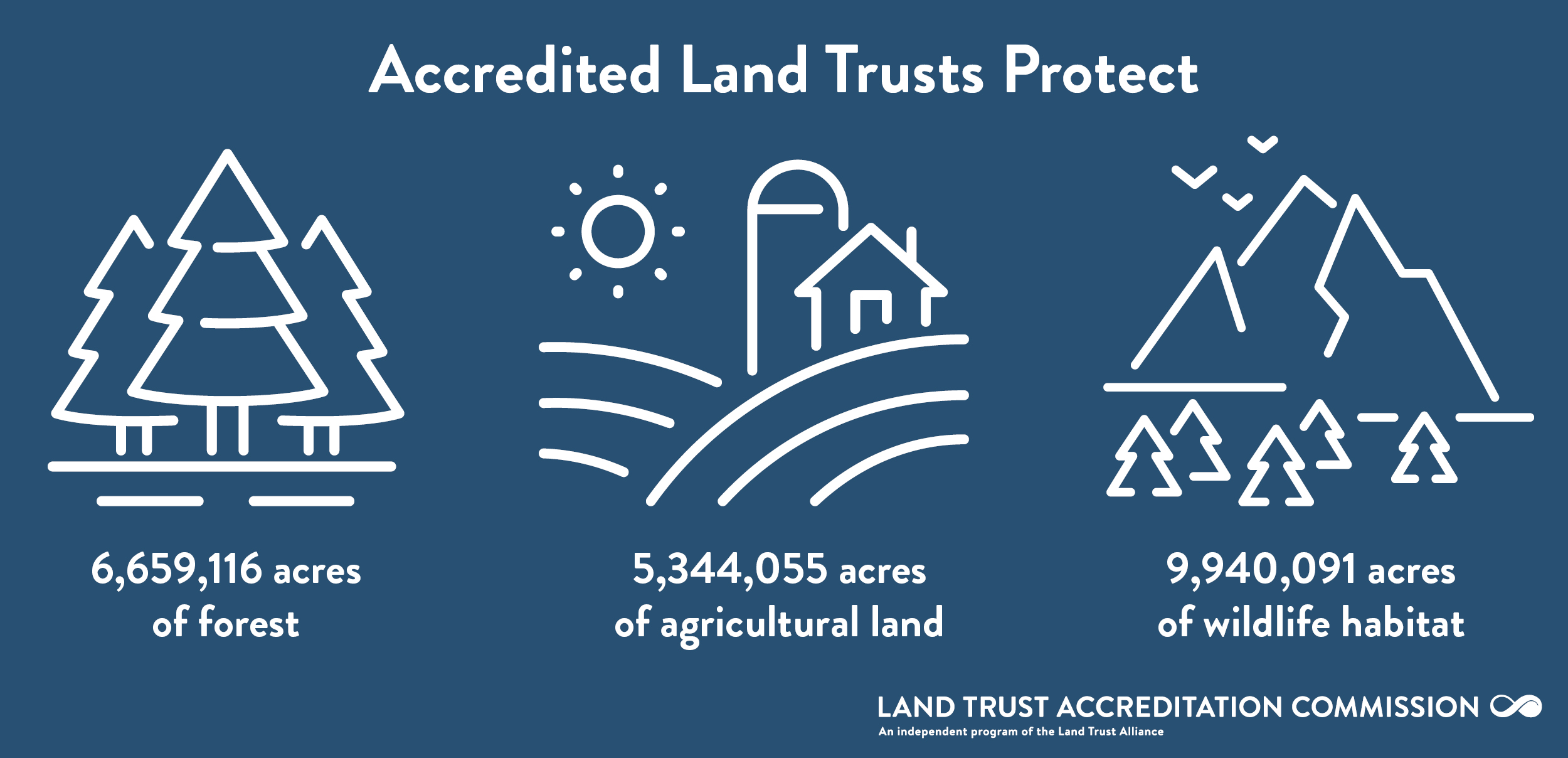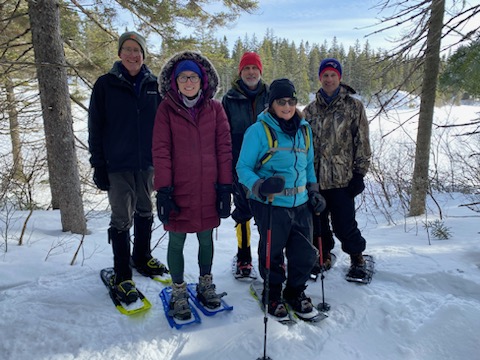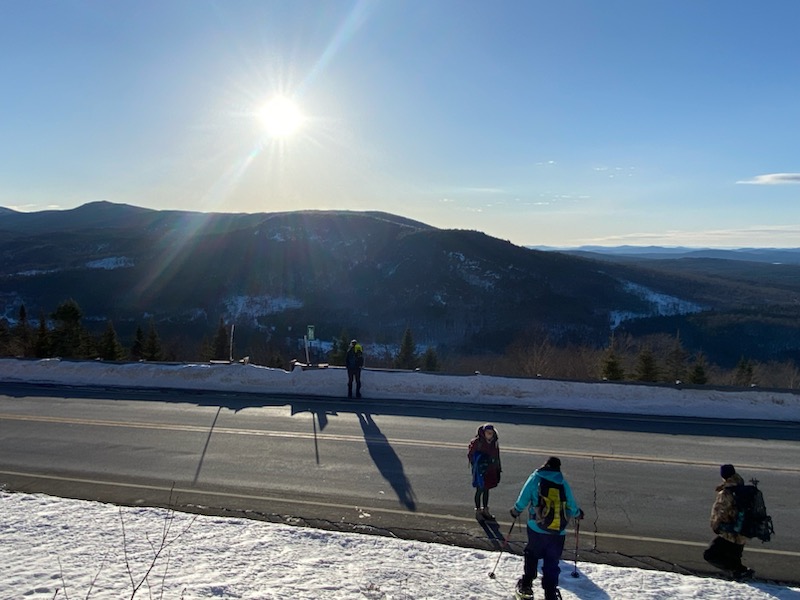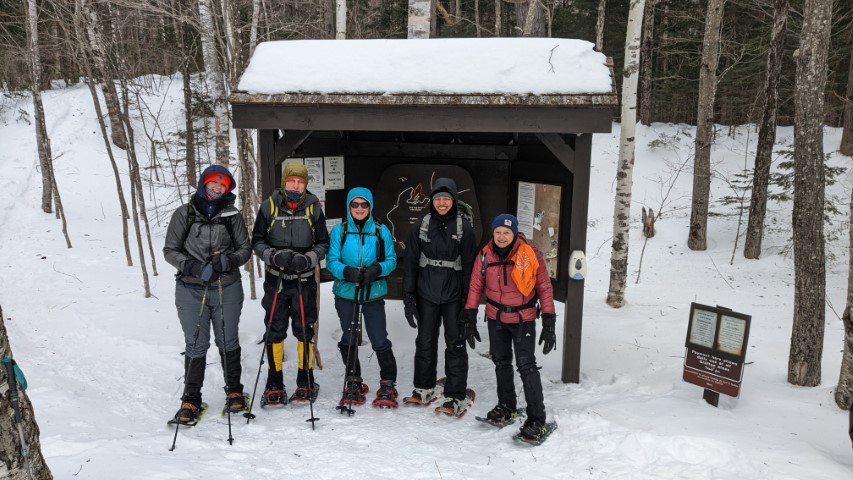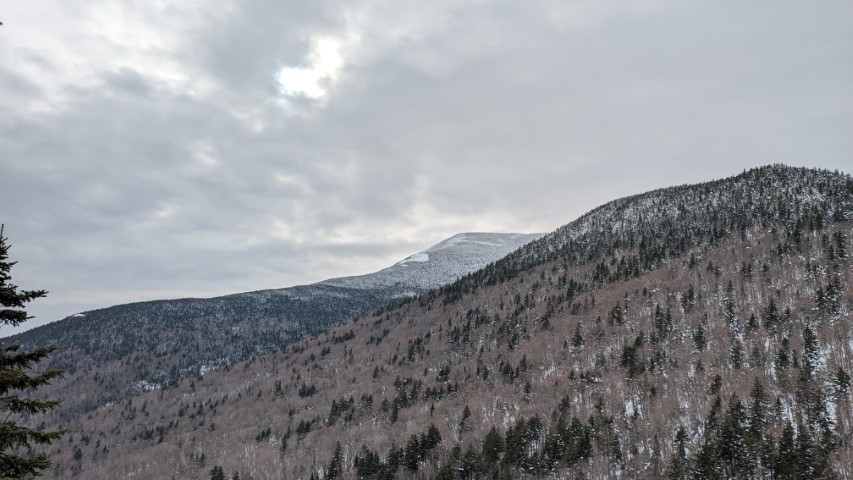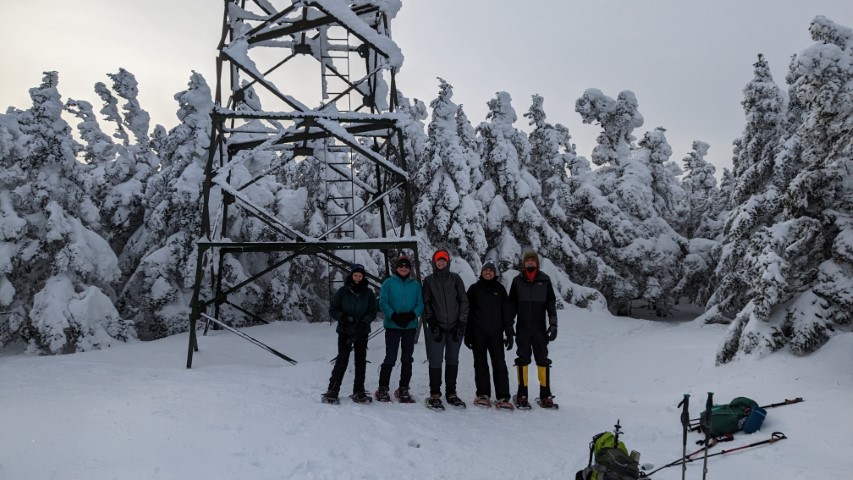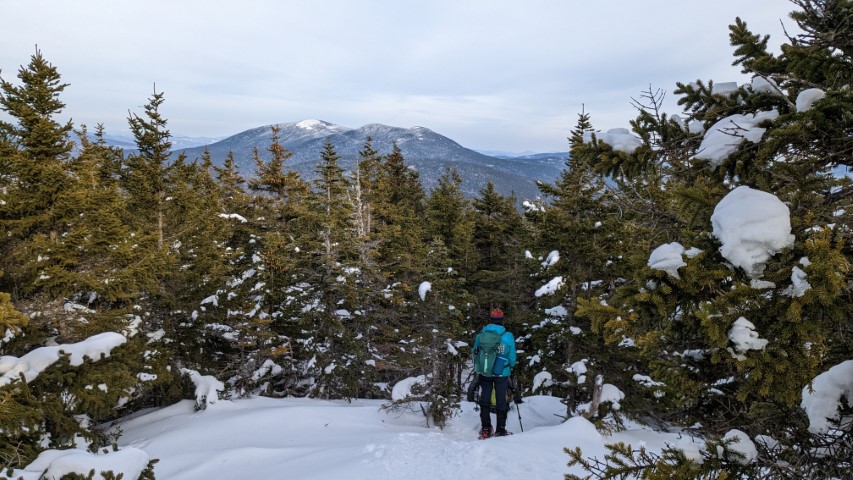Our sixth trip! These outings have been amazing so far, and we have been fortunate to have had great weather despite the rainy season. This trip to Little Bigelow might have featured the best conditions of all for a hike on the Appalachian Trail. We enlisted Samaa Abdurraqib who is a multitalented Mainer in arts, humanities and community work, but she’s also a Wilderness First Responder, an organizer for Outdoor Afro, and a Maine Master Naturalist!
We headed out looking to make it as far up Little Bigelow as time would allow. Samaa talked to the group about different elements of nature that were all around us, including ferns and how to tell them apart, how to identify balsams by their nice smell, and different things on the forest floor (mushrooms, toads, flowers, etc.). She also pointed out the many birch trees to connect to last week’s learning about birch bark canoes! And maple trees to connect to syrup.
We had lunch at the A.T. shelter on the way – interviews with another camera crew making another documentary, ho hum. The kids had a chance to talk a little with some kind thru-hikers who were equally grateful for the extra sandwiches we gave them. We continued on, reaching the summit of a knoll with a nice view in the afternoon. The knoll featured many blueberries and the kids were able to pick lots! They had lots of questions about when they grow, why in Maine, and what you could make with them. Samaa answered them all!
The trip down was fairly quick – no swimming for this trip due to cooler temperatures but we have more #WEOUTSIDE excursions to come!

